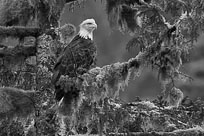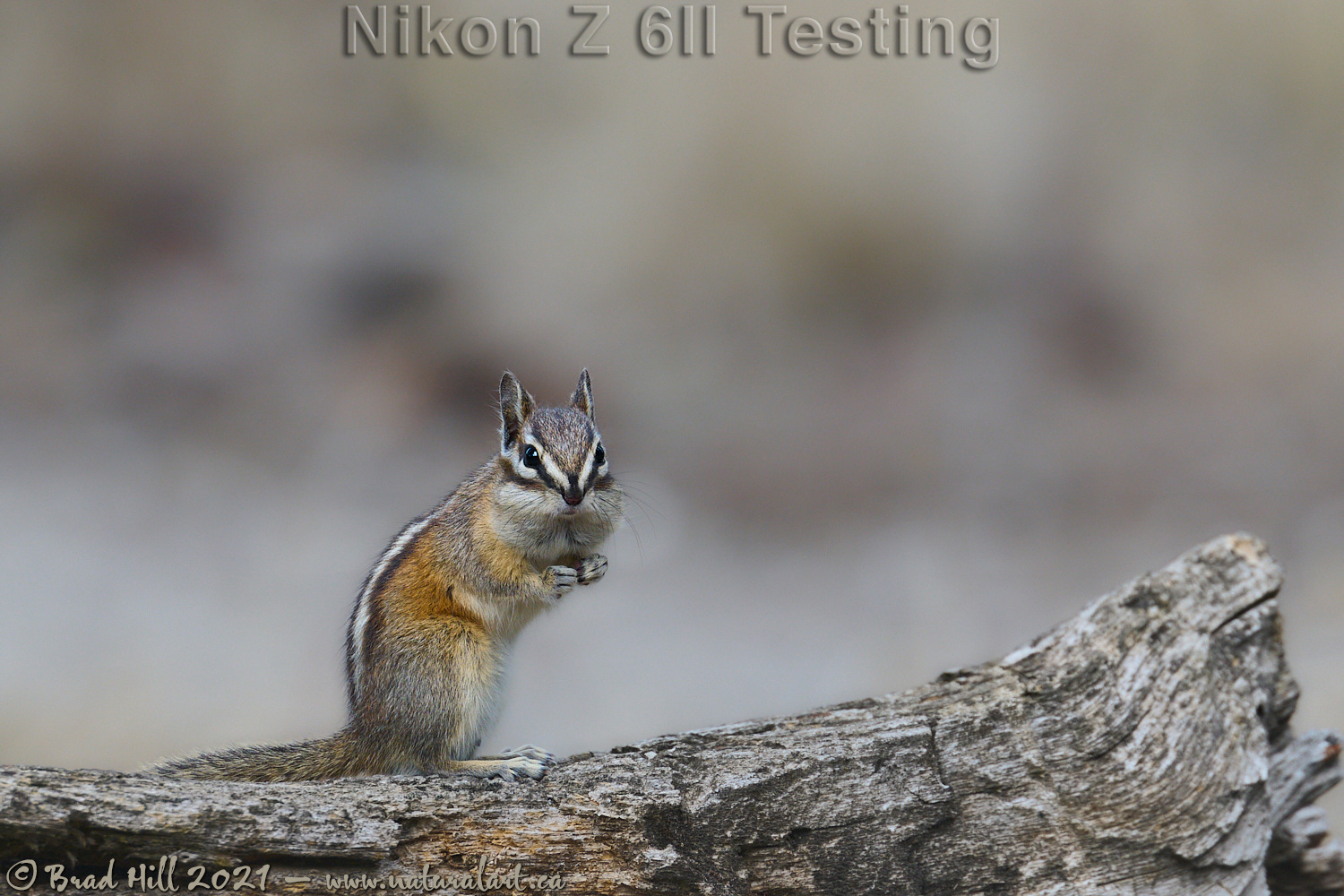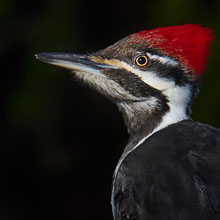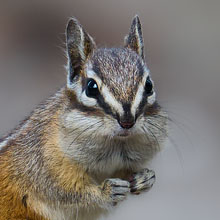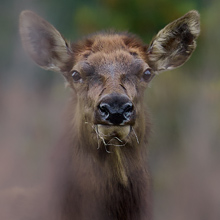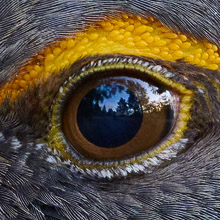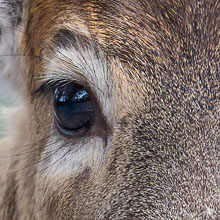Availability: Undetermined - Enquiries?
In the Field
Z 6II Testing - Awakened Again - Yellow-pine Chipmunk in March. Findlay Creek Region (East Kootenays), British Columbia, Canada. March 27, 2021.
This is my second installment conveying my experiences with shooting wildlife using the Nikon Z 6II. This cute, small, and perpetually "busy" little rodent is a Yellow-pine Chipmunk. Compared to our other local ground squirrels they have a very long annual active period - they don't disappear into their underground burrows until late November (as opposed to late August for our Columbia Ground Squirrels) and they emerge in early March. Interestingly, that pretty much mirrors the hibernation period of our local bears.
So...why am I posting a "non-spectacular" look at a chipmunk here? Well...I'm in the midst of evaluating how both the new mirrorless cameras from Nikon (the Z 6II and Z 7II) will perform for me as wildlife cameras. Rather than fixating on one narrow aspect of their performance (such as focus-tracking which seems to predominate the thoughts of a lot of online pundits these days) I am trying to put both cameras through a very wide array of "use cases", covering as many of the situations I commonly encounter during my own wildlife photography as possible. So, things like...over a wide array of lighting situations (including very low light shooting), with a wide variety of focal lengths (including using native Z-mount lenses and adapted F-mount lenses), with a wide range of distances to subject, with static vs. moving subjects (including fast moving perching birds and small mammals, with both 1.4x and 2x TC's, et cetera! At the end of this process I want to have a very balanced and overall view of how effectively the Z 6II and Z 7II perform for me as wildlife cameras.
But back to this little dude. This image was captured using a Z 6II paired up with the Nikkor 120-300mm f2.8E lens plus the TC-20EIII (2x) teleconverter, for a total focal length of 600mm. I was curious primarily in two things about how this lens/TC combination performed - how the AF performed and how good of image quality I could get out of it.
In terms of the AF...I have two observations. Compared to shooting the same lens with NO teleconverter or with the 1.4x TC, I did notice a slight slowdown in AF speed. But not a lot...and it was definitely fast enough to capture shots where I had only a second or so nab the pose. And, the slowdown in AF you see with the 2x TC was no more than you see with Nikon DSLR's. And, more importantly, the focus with the 2x TC seems deadly accurate, regardless of the distance to the subject. And, it seems MORE accurate over a range of distances than you could get out of using the same TC and lens paired up with any DSLR. This difference manifests itself in a higher hit rate (of perfectly focused shots) with the Z 6II and Z 7II than with any DSLR (including the D6) when the same lens is used with the TC-20EIII.
Image quality? Well...from my perspective it seems shockingly good. And I think the main reason for this comes down to the 2nd observation above...the accuracy of the AF. In the entire time I was shooting the TC-20EIII with selected primes and a Nikon DSLR I had thought that Nikon's TC-20EIII was capable of producing very good images, but the AF was always finicky...and the hit rate was always on the disappointing side. With the improved results I am getting when shooting the 2x TC on the Z 6II and Z 7II I am convinced more than ever that the biggest "problem" with the TC-20EIII when shot with a DSLR was simply focusing accuracy.
One final comment on image quality with the 2x TC plus 120-300mm f2.8E combination. I have found that with this combination you have to stop down a LITTLE from wide open to get the sharpest results - like between 1/3 and 2/3 of a stop (so down to f6.3 or f7.1). But after that there are no further sharpness gains as you stop down further. This is a different situation that when you shoot the 2x TC paired with the Nikkor 500mm f5.6E PF - that combination is sharp as can be when shot wide open (which is f11, which makes me chuckle a little..."F11 is wide open???").
Anyway...if you're a Nikon-shooting wildlife photographer you'll likely be pleasantly surprised by how well your F-mount teleconverters - combined with your F-mount lenses - work with the Z 6II and Z 7II. Heck, if you've always been "teleconverter-hesitant" you may even find yourself becoming a teleconverter fan once you try them with your Z 6II or Z 7II. I'm personally pretty excited about shooting both of my Zed's paired up with my 500mm PF plus TC-20EIII (2x) TC this season - what a light, portable and sweet 1000mm combination (and one that won't even focus on ANY Nikon DSLR).
Here's a larger version (2400 pixel) of this cute little dude:
• Awakened Again - Yellow-pine Chipmunk in March: Download 2400 pixel image (JPEG: 1.1 MB)
ADDITIONAL NOTES:
1. This image - in all resolutions - is protected by copyright. I'm fine with personal uses of them (including use as desktop backgrounds or screensavers on your own computer), but unauthorized commercial use of the image is prohibited by law. Thanks in advance for respecting my copyright!
2. Like all photographs on this website, this image was captured following the strict ethical guidelines described in The Wildlife FIRST! Principles of Photographer Conduct. I encourage all wildlife photographers to always put the welfare of their subjects above the value of their photographs.
Behind the Camera
Z 6II Testing - Awakened Again - Yellow-pine Chipmunk in March. Findlay Creek Region (East Kootenays), British Columbia, Canada. March 27, 2021.
Compressed RAW (NEF) 14-bit format; ISO 800.
Nikon Z 6II paired with Nikkor 120-300mm f2.8E combined with the TC-20EIII (2x) TC (total focal length of 600mm). Supported on Jobu Killarney tripod with Jobu HDMkIV gimbal head. VR on and in Sport mode. Single Point Area AF area mode.
1/640s @ f8; -0.3 stop compensation from matrix-metered exposure setting.
At the Computer
Z 6II Testing - Awakened Again - Yellow-pine Chipmunk in March. Findlay Creek Region (East Kootenays), British Columbia, Canada. March 27, 2021.
RAW Conversion to 16-bit PSD file (and JPEG files for web use), including all global and selective adjustments, using Phase One's Capture One Pro 21. No global adjustments were made to this image. Selective local adjustments performed using Capture One Pro's layers and masking tools. In this case selective adjustments were made on 6 separate layers and included one or more tweaks to exposure, clarity, color balance, color saturation, sharpness, and structure (it's a Capture One thing).
Photoshop modifications were limited to the insertion of the watermark and/or text.
Conservation
Z 6II Testing - Awakened Again - Yellow-pine Chipmunk in March. Findlay Creek Region (East Kootenays), British Columbia, Canada. March 27, 2021.
Species Status in Canada*: This species is not designated as at risk.
The Yellow-pine Chipmunk (Tamias amoenus) occupies the widest array of habitat types of any chipmunk in British Columbia, including lowland forests, arid-steppe grasslands, through to sub-alpine forests and alpine meadows. And, they're found from sea level up to an elevation of up to 2300 meters. Geographically their range includes from California and Nevada north to British Columbia and western Alberta.
With its wide range of habitats also comes a diet with a wide variety of foods. They eat fungi, a huge range of plant material, insects and other invertebrates, and even birds eggs. In turn, they are the prey of Red-tailed Hawks, American Badgers, Long-tailed Weasels, Bobcats, Coyotes, among other opportunistic predators.
Studies and reports of the populations of Yellow-pine Chipmunks are few and far between, but there's no evidence that their numbers are declining or that their geographic range is shrinking.
*as determined by COSEWIC: The Committee on the Status of Endangered Wildlife in Canada










